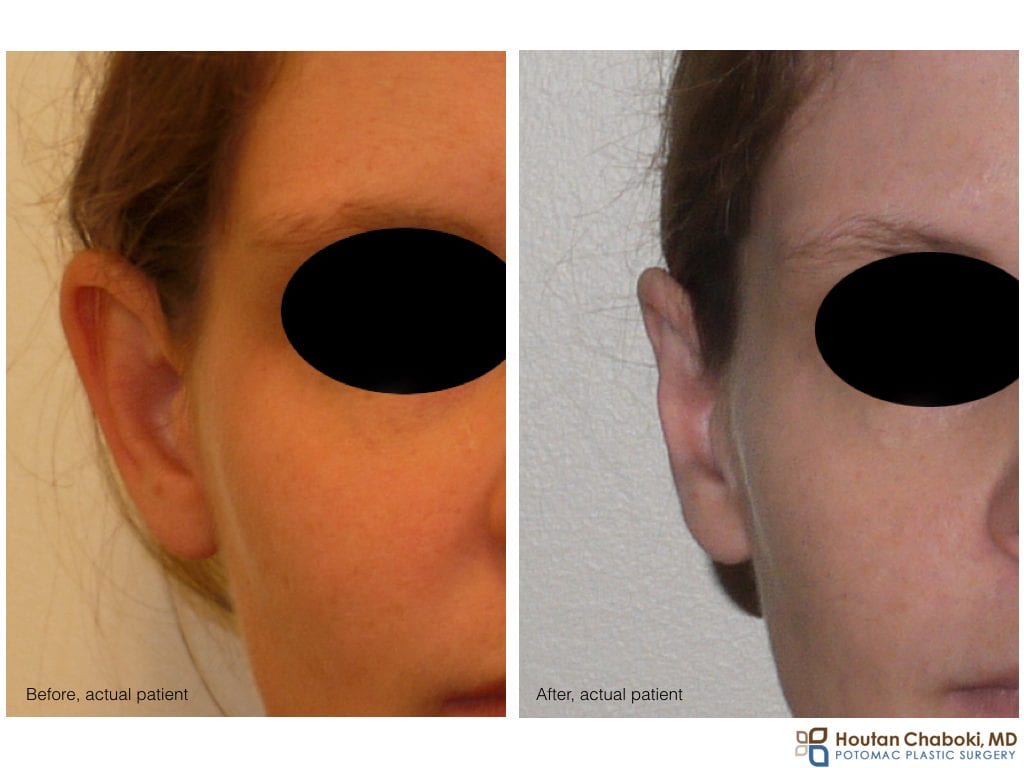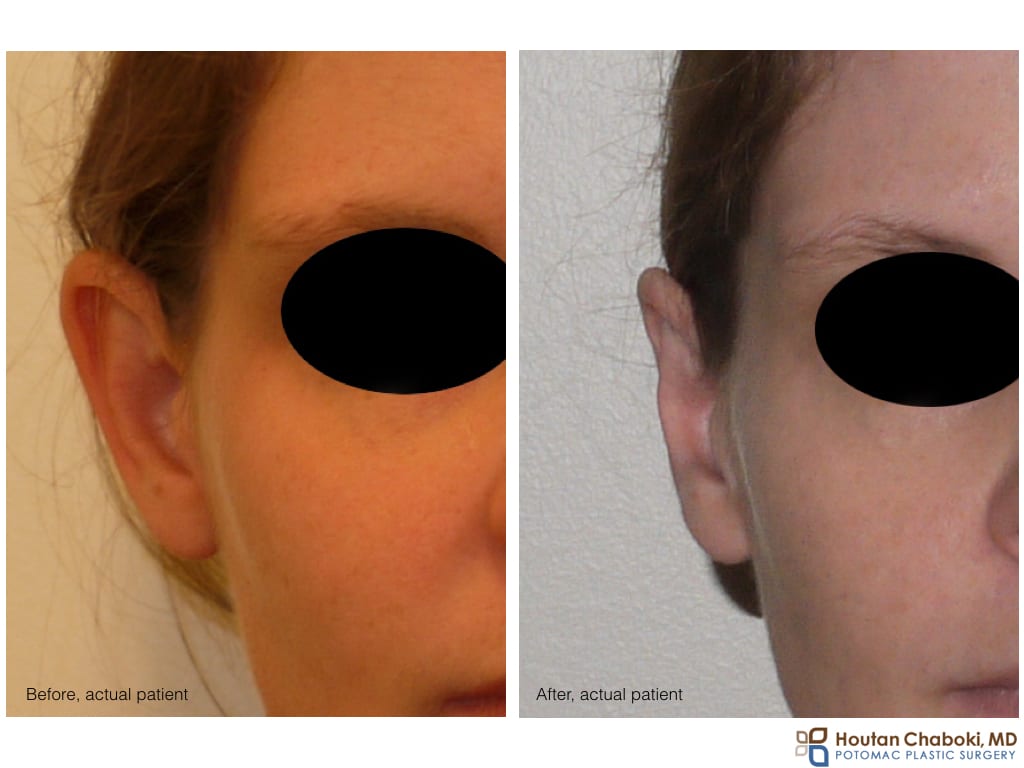The human ears have a complex development process in-utero. Six different parts of the embryo come together to form the ear. It’s an amazing process that inherently has variability in the final appearance, one of which is prominent or protruding ears.
An issue that concerns patients with prominent ears is that the ears draw a disproportionate attention away from the rest of the face, which subsequently may contribute to a decrease quality of life for some. Patients then seek surgery to reshape the ears to pin them back or make the ears smaller, thus decreasing attention from the ears.
Otoplasty (i.e. ear reshaping surgery) can be performed as a child, but many wait until adulthood to have plastic surgery. In addition, otoplasty is usually performed on both ears, but may only be required on one ear due to inherent asymmetry in everyone’s ears.
What happens during otoplasty?
The procedure can be performed in the office via strictly local anesthesia, while some patients prefer some level of sedation (ex. relaxation tablets or IV anesthesia). An incision is made behind the ear. The ear cartilage is then reshaped to create or augment the natural folds with permanent sutures. The “cup” part of the ear may be reduced and/or pinned back too to improve the appearance. Two types of sutures are used: internal permanent sutures to modify the cartilage itself, external sutures on the skin that dissolve over time.
Plastic surgeons may use various modification for otoplasty for the unique needs of each patient. For example, one ear may need more “folding”, while the other side needs more “pinning”.
How is recovery after otoplasty surgery?
A headband type gauze dressing is placed immediately after surgery. The entire procedure takes about 1-2 hours for most patients. Most discomfort resolves within first day or so, and our patients often have not needed pain medication after this initial healing period. Patients are seen by their plastic surgeon the following day, where the initial dressing is changed to an elastic, sports types headband. This headband should not be tight, but rather provide a gentle “hug” to protect the ears. Glasses can usually be worn after surgery. We also encourage vaseline on the stitches to minimize scarring. Heavy activity, such as exercise or sex, is not permitted for the first two weeks.
Our otoplasty care instructions can be found here, but each patient and surgery is different so follow the care instructions from your facial plastic surgeon that are specific for your recovery. Patients have returned to work or school soon after surgery, while many prefer to take one week off.
Have you considered otoplasty? Share your questions below.



Leave a Reply